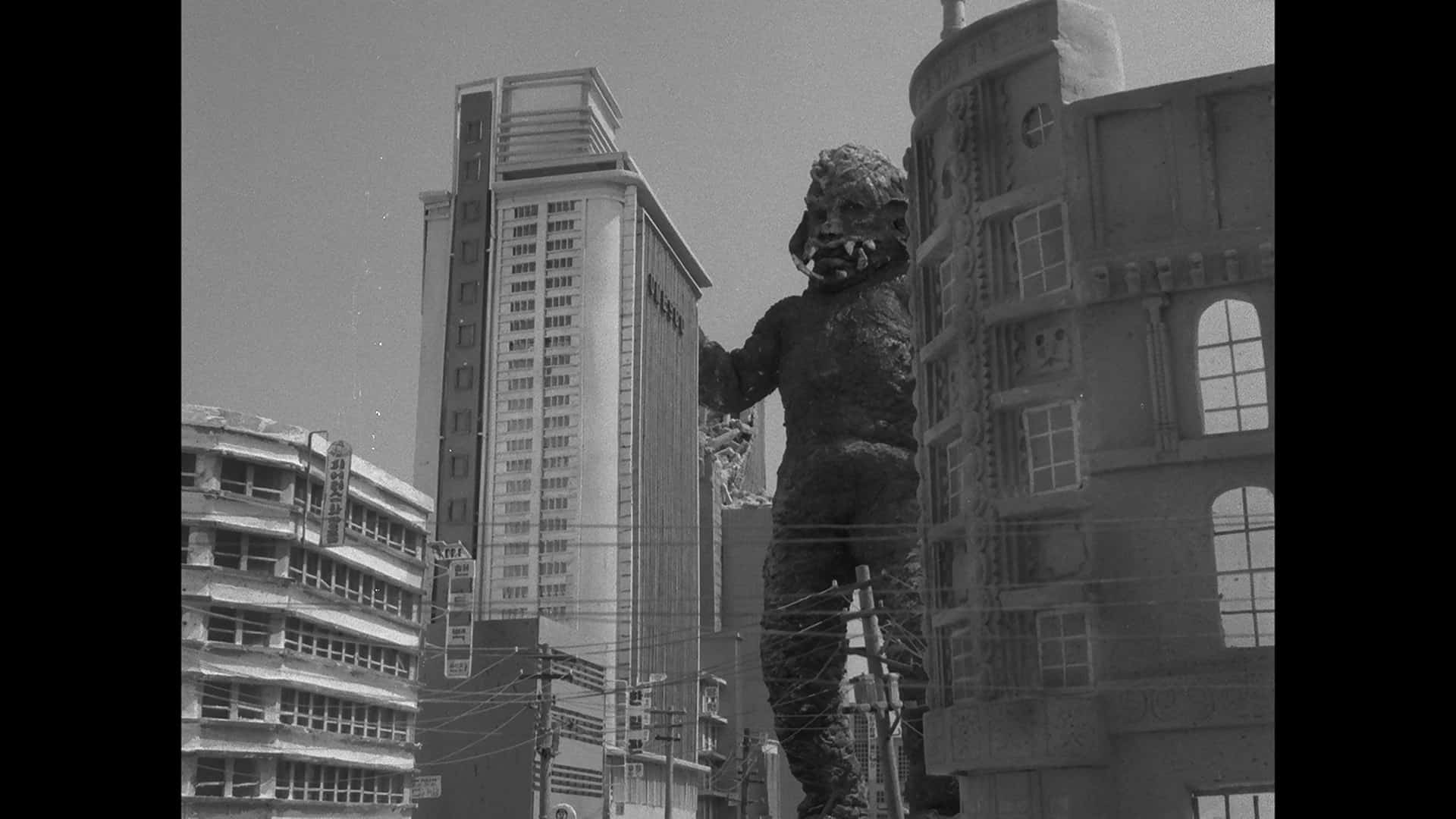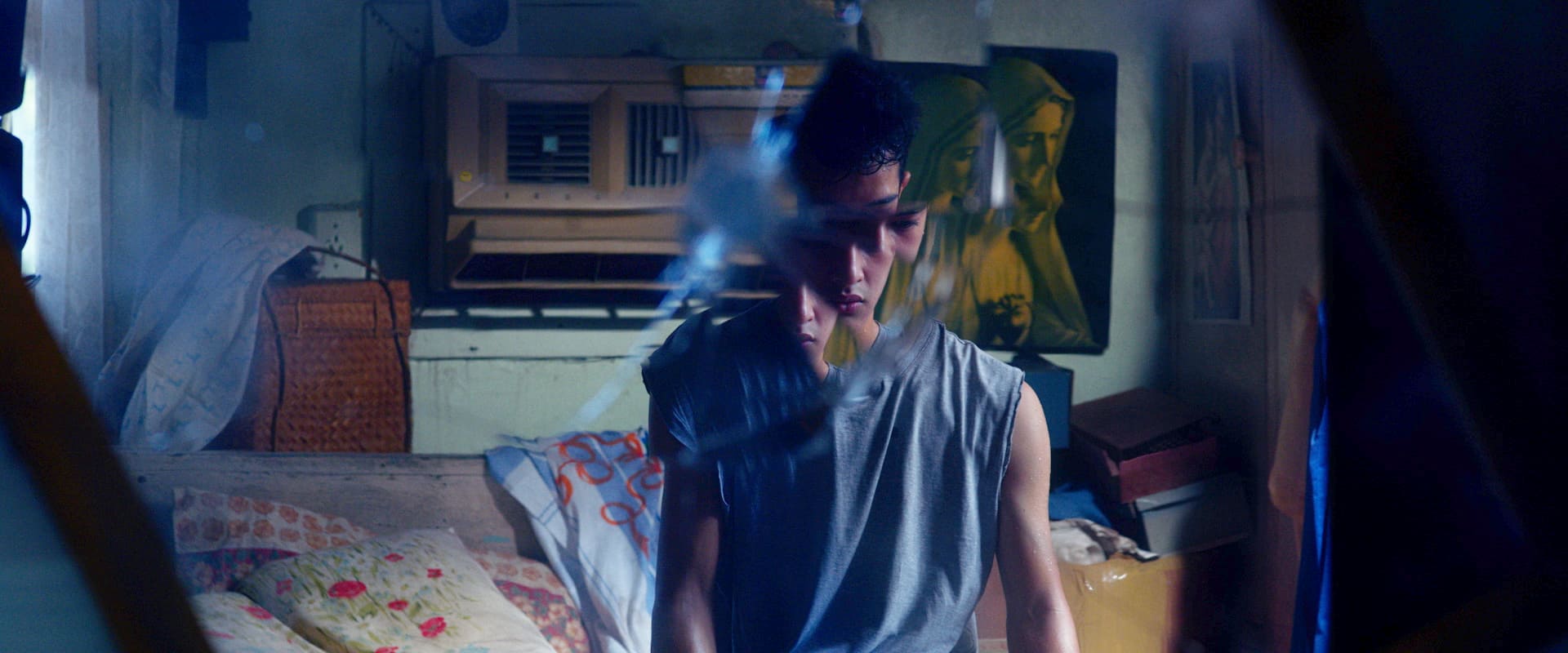The issue of the Zainichi Koreans was one that interested Nagisa Oshima significantly, with him having shot the TV documentary “Forgotten Soldiers” in 1963 and the experimental short “Diary of Yunbogi” in 1965. Two events revolving around the problems of Koreans in Japan, the Kim Hiro and the Komatsugawa Incident, were also roots of inspiration for him, resulting in two films, “Death by Hanging” and “Three Resurrected Drunkards” both of which use irony, theatricality and intense avant-garde elements to portray his take on the subject.
Buy This Title
on Amazon by clicking on the image below
The overall directorial approach here becomes apparent from the beginning, as it shows three Japanese students at the beach, reenacting one of the most famous pictures of the Vietnam war, before they decide to strip to their underwear and go for a swim. While they are swimming, a hand emerges from the sand and steals their clothes, leaving two Korean uniforms instead, one of a soldier and one of a student, along with a bit of money. The three of them have to make do with what is in front of them, which effectively transforms them into Zainichi Koreans in the eyes of the locals. As soon as they go into the town, they start feeling the discrimination and overall ill-treatment minorities face in Japan, starting from the elderly woman (actually and obviously a man) in a convenience store they go to buy cigarettes.
Soon, they find themselves being chased by the police and apprehended by a “concerned” citizen, although in the end they manage to escape, ending up hiding in a public bathhouse. While there, they stumble upon a naked young woman who advises them to also steal other people's clothes. The girl eventually becomes part of their “gang”, while an old man is chasing after her. Furthermore, the four of them repeatedly stumble upon the Koreans who stole their clothes, in both dangerous and hilarious fashion.
Nagisa Oshima shoots a movie which obviously aims at criticizing the Japanese society and particularly the discrimination to the point of racism that seems to dominate it up to this day. His approach in doing so, however, based on the writing of another activist of cinema of the time, Masao Adachi, who functions as script-writer along Mamoru Sasaki and Tsutomu Tamura, follows a comedic/surrealistic approach. This, does not mean that the film lacks seriousness, and actually the comments are as pointed as they are well communicated, while the effort at ridiculing the way of thinking of the Japanese gets mocked left and right.
In that fashion, that the three students are judged based on their appearance (wearing Korean clothes essentially deems them Koreans) emerges as the main tool for this comment, with Oshima actually taking it a step further upon the interactions of the two groups. In that regard, by the last time they meet, they have also assumed the identities their clothes suggest, with their clash being the opposite of what it was in the beginning. The concept of appearance and how people judge others based on it is actually one of the most central ones in the film, with Oshima mocking how people are quick to judge others based on it. As with the rest of the remarks, he plays with that too, with the relationship between the young girl and the old man being indicative of this approach, as much as of the humor in the movie.
Furthermore, he also connects this element with the concept of identity, as we watch many of the protagonists eventually assuming identities based on what they are wearing, something that extends beyond ethnicity, to their sex.
In terms of cinema, Oshima experimented significantly with form and overall cinematic approach, which was his trademark at the time. In that regard, the narrative depends heavily on repetition, with a number of scenes, such as the one in the beach and the meeting of the two groups for example, found repeatedly in the movie, while the story essentially begins twice from the same point (the ‘resurrected' aspect mentioned in the prologue). Furthermore, there is an evident theatricality permeating the movie, which is found both in the artificiality of the sets and the acting, which is occasionally exaggerated on purpose. The three Japanese students, Kazuhiko Kato, Osamu Kitayama and Norihiko Hashida are the main representatives of this style, which finds its apogee, though, in Taiji Tonoyama's performance as the old man. Mako Midori on the other hand gives a more grounded performance as a kind of Eve in the role of the young woman, with the same applying to Kei Sato who plays the leader of the Korean group.
Yasuhiro Yoshioka captures the aforementioned style with precision, frequently managing to portray exterior shots as if ones in studios, with the production design also moving in the same direction. Keiichi Uraoka's editing results in a fast pace that also adds to the deliriousness that characterizes the whole movie, with the repetition being well placed in order to further the comments here.
“Three Resurrected Drunkards” is an excellent sample of the cinematic tendencies of both Oshima and a whole group that tried to renovate cinema during the end of the 60s and the 70s, by combining new cinematic approaches with pointed sociopolitical commentary. The result definitely demands some knowledge of the climate of the era and the overall mentality of the Japanese towards foreigners, but the issues of discrimination and racism echo universally, making the film relevant to this day.

















